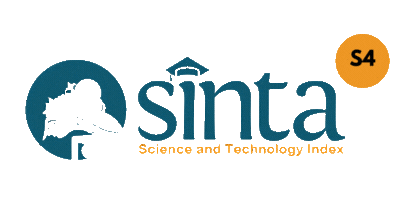MENDETEKSI REDUNDANSI PASANGAN KALIMAT DALAM DOKUMEN SPESIFIKASI KEBUTUHAN PERANGKAT LUNAK DENGAN PENDEKATAN KEMIRIPAN SEMANTIK
DOI:
https://doi.org/10.47111/jti.v15i1.1894Keywords:
Software Requirements Specification Document, Redundacy, Semantic, SentencesAbstract
Software Requirements Specification Document must be complete, unambiguous and correct because an incorrect Software Requirements Specification Document can lead to failure in software development. Software Requirements Specification document must contain non-redundant sentences. Meyer's Seven Sins describes several errors in Software Requirements Specification Document, one of which is redundancy which is a variant of noise. Redundancy is the repetition of the same information, but using different terms or phrases, thus giving the impression that new information is available. This study analyzes the performance of the framework and tools for detecting redundancy in sentence pairs in the software requirements specification document using the WordNet-based semantic similarity method. This study tries to develop the framework and tools that have been proposed in previous studies, namely by detecting redundancy in sentence pairs without fact extraction. The proposed approach and evaluation process uses Kappa values ??to determine whether the performance of the framework and assistive tools can be used to detect redundancy in sentence pairs properly.
The method using literature study, data collection, problem analysis, making a framework, making auxiliary tools, and testing. The test uses the Kappa value with two scenarios, from the results of testing the framework and assistive tools can be used to detect redundancy in the Software Requirements Specification Document with a Kappa value of 0.777 with the interpretation of the kappa value is a substantial agreement at a threshold of 0.73
Downloads
References
S. Engineering and S. Committee, IEEE recommended practice for software requirements specifications, vol. 1998. 2011.
R. Pressman, Rekayasa Perangkat Lunak 7th ed. Yogyakarta: Andi, Yogyakarta, 2012.
S. Nurfauziah, Pendeteksian Ketidaklengkapan Kebutuhan Dengan Teknik Klasifikasi Pada Dokumen Spesifikasi Kebutuhan Perangkat Lunak, vol. 9, no. 2. 2017.
B. Meyer, “On Formalism in Specification,” IEEE Softw., vol. 2, no. 1, pp. 6–26, 1985.
umber A and Bajwa I.S, “No Title,” in Minimizing Ambiguity in Natural Language Software Requirements Specification, 2011, pp. 102–107.
P. Gupta, “Impact of formal Inspection to Software Requirements Specification For Software Quality Assurance,” Glob. J. Enterp. Inf. Syst., vol. 2, no. 2, pp. 11–19, 2010.
M. H. Osman and M. F. Zaharin, “Ambiguous software requirement specification detection: An automated approach,” Proc. - Int. Conf. Softw. Eng., no. July, pp. 33–40, 2018.
K. Thadani and K. McKeown, “A framework for identifying textual redundancy,” Coling 2008 - 22nd Int. Conf. Comput. Linguist. Proc. Conf., vol. 1, no. August, pp. 873–880, 2008.
E. D. Oktaviyani and D. Oranova, “Redundancy Detection In Software Requirements Statements,”. (hal 90-91). The 12th International Conference on Electronics, Inforrnation, and Communication (ICEIC 2013), Bali, 30 Jan – 2 Feb 2013
S. Christina and E. D. Oktaviyani, “Identifying the relevant page numbers that referred by the back-of-book index using syntactic similarity and semantic similarity,” in 2017 Second International Conference on Informatics and Computing (ICIC), 2017, pp. 1–6.
E. D. Oktaviyani and Licantik, “Redundancy Detection of Sentence Pairs in the Software Requirements Specification Documents with Semantic Approach,” IOP Conf. Ser. Mater. Sci. Eng., vol. 879, no. 1, 2020.












